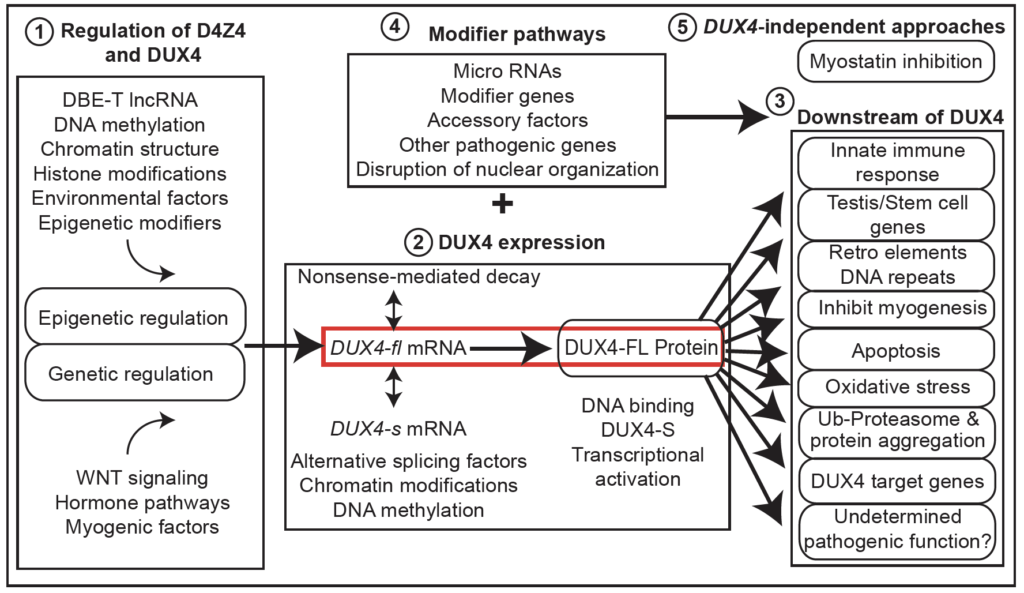FSHD therapeutics
Overview of FSHD therapeutics approaches
FSHD is a pathogenic gain-of-function disease
Most other muscular dystrophies result from mutations resulting in loss-of-function effects in muscle structural proteins, gene regulation pathways, or cell signaling pathways. Thus, these need to be “fixed” or replaced. FSHD is conceptually different from a therapeutic perspective.
In FSHD …
The DUX4 protein needs to be removed or destroyed, or its pathogenic activity blocked. Thus, FSHD is amenable to numerous therapeutic technologies. DUX4 expression needs to be repressed, or its mRNA/protein destroyed, or its downstream pathogenic activities blocked.

FSHD therapeutic targets include the regulation of the following:
- DUX4 gene expression
Small molecule transcriptional inhibitors, CRISPR inhibition, CRISPR/Cas9 DNA editing, CRISPR/Cas base editing, G-quadraplex binders. - DUX4 mRNA and protein
Antisense technology, CRISPR/Cas13 RNA degradation, degradons/PROTACs. - DUX4 downstream pathways
Anti-inflammatory treatment, anti-oxidants, proteasome. - DUX4 modifier genes and factors
Increase expression of SMCHD1, other repressive factors. - DUX4-independent pathways
Myostatin inhibition, cell and stem cell therapy.

